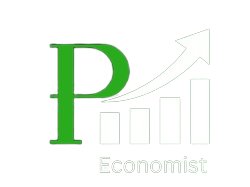Economic Survey

12 June 2024
Published in: Business Recorder
The Economic Survey 2024-25 gives good news: key macroeconomic indicators are better than the comparable period of last year with GDP growth rate of 2.38 percent this year against negative 0.21 percent last year (attributed to “catastrophic floods, surging world commodity prices, global and domestic monetary tightening and political uncertainty” though these catastrophic floods had a “fertility impact” on major crops – wheat, rice, cotton) with agriculture growth at 6.25 percent this year against 1.55 percent last year, industry growth at 1.21 percent this year against negative 2.94 percent last year, and services grew by 0.86 percent last year and positive 1.21 percent this year.
The not so good news is that the comparison with July-March 2022-23 is invidious as the then Ishaq Dar-led Finance Ministry had brought the country perilously close to default through implementing two majorly flawed policies that were violative of the pledges made under then then ongoing International Monetary Fund (IMF) programme leading to its suspension: (i) announcing unbudgeted 110 billion-rupees electricity subsidy to exporters, while 33 million Pakistanis were living under the open sky due to the devastating summer 2022 floods; and (ii) controlling the rupee-dollar parity that led to multiple prevailing exchange rates which, in turn, strangled official remittance inflows by 4 billion dollars. The obvious denouement: the bar was so low last fiscal year that any improvement, especially when calculated in percentage terms, would appear to be significant.
In addition, in spite of the bumper wheat crop this year the poor judgement call of the caretaker Punjab government to allow imports led to inability of the provincial government to purchase wheat directly from farmers due to lack of storage facilities leading to thousands of farmers facing a financial crisis.
Sadly this did not merit a comment in the Survey. And though cotton and cotton yarn exports rose on the back of a bumper cotton crop, yet total exports of the textile chain declined from 14.115 billion dollars July-April, 2023 to 13.550 billion dollars in the comparable period of this year. This is reflected by the fact that textile growth was negative 8.3 percent (July-March 2024) with pharmaceutical growth at 23.2 percent (Pakistan’s pharma sector is heavily dependent on import of raw materials) and furniture at 23.1 percent.
Large Scale Manufacturing sector (LSM) grew by 0.1 percent against negative growth last year. LSM data needs clarity on two counts.
First, there has been a steady widening of the differential in the LSM growth rate this year when compared with the same period last year – in July-October 2023, LSM experienced negative 1.67 percent growth against negative 0.44 percent in the comparable period of this year which widened to negative 2.67 percent July-January 2023 to negative 0.52 percent July-January this year and to negative 0.10 percent July-March this year to negative 6.99 percent in the comparable period of last year.
Bafflingly, this improvement occurred when investment to GDP declined this year to 13.1 percent from 13.6 percent last year.
Another surprising statistic is the claim that savings as a percentage of GDP improved from 12.6 percent last year to 13 percent this year – and this in spite of the inflation rate of 26 percent July-April cited in the Survey this year against 28.2 percent for July-June last year.
The general perception is that under- and over- stated data may perhaps have been considered critical to appeasing a restive public and convince the Fund that the economy has begun to show dividends based on policies being implemented under the nine-month-long Stand-By Arrangement (SBA) programme.
Domestic debt rose from 35 trillion rupees as stated in last year’s Survey to 43.4 trillion rupees this year – a rise of 24 percent, though external debt remained constant no doubt because of the inability of the government to procure affordable loans from the commercial banking sector abroad or issue sukuk/Eurobonds due to poor rating that has yet to be upgraded since approval of the SBA effective July 2023.
Poor rating or not the domestic stock market improved markedly perhaps on the back of the under negotiation successor to the SBA Fund programme.
Federal tax revenue as a percentage of GDP was a low 6.3 percent July-March this year against 6.1 percent last year with total current expenditure at 11.6 percent of GDP against 11 percent last year. Total revenue, however, was 9.2 percent this year as opposed to 8.3 percent last year.
In total terms direct taxes increased by 41.1 percent that may be construed as an attempt to deliberately mislead the public as the bulk of these direct taxes are on the back of withholding taxes imposed in the indirect tax mode whose incidence on the poor is greater than on the rich and is passed on in pricing invariably.
Needless to add, the auditor general in his report had urged Federal Board of Revenue to desist from this patently dishonest exercise yet to no avail.
Three major improvements are in the current account deficit though desired inflows from exports and remittances have yet to reach 2022 levels, the rise in foreign exchange reserves (strengthened almost entirely by the rollovers by friendly countries) and an improvement in the primary surplus though that is on the back of a rising budget deficit in total terms however the Survey notes that the deficit is the same as last year in percentage terms.
The Survey notes that the performance of the economy in the current year was below expectations. This observation does not take account of the usual over-optimistic projections made in our budgets – some targeted towards the general public (inclusive of understating the rate of inflation at 11.3 percent for May and an unrealistic 6.3 percent unemployment) while others are focused on appeasing multilateral lender concerns especially at present when negotiations on the next longer term IMF programme are under way that entail agreement on the macroeconomic indicators (measured by their acceptability by the Fund team) on which would depend the way forward, read conditions for the next programme – an element that accounts for the inordinate delay in the presentation of the three-year Budget Strategy Paper.





